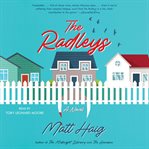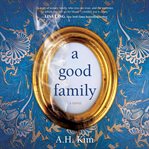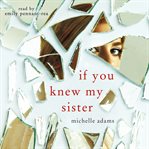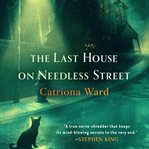Review by New York Times Review
THE vampire novel is a crowded genre these days. To distinguish itself, a book will need inventiveness, wit, beauty, truth and a narrative within which these attributes can flourish. "The Radleys," by Matt Haig, has got them, if sometimes in alloyed form. Let's start with the premise. A nuclear family of four vampires - mom, dad, sister, brother - live in the English suburb of Bishopthorpe. The parents know what they are, and have concealed this knowledge from their teenage kids, who, inadvertently abstaining from the blood they don't know they need to drink, suffer from nausea, insomnia, weakness, "photodermatosis" and mortifying high school unpopularity. Then one night, attacked by a large ogre of a boy, the daughter discovers her true nature the hard way, precipitating a vampire family crisis. Into this rushes the dad's dastardly but alluring brother, who freely does all the cruel, exciting things the parents have protected their children from and have painfully denied themselves for years. The stage is now set for the moral conflict that Haig adroitly develops. The moral stakes, so to speak, are spelled out in "The Abstainer's Handbook," a self-help guide for "blood addicts" who have chosen not to give in to their "overwhelming blood thirst" (or O.B.T. for short). Its anxious homilies and admonishments appear as epigraphs throughout the novel. Freud would appreciate its assertion that "civilization only works if instincts are suppressed," though he might warn against its methodology: "Confine your imagination." One instinctual activity that gets suppressed, at least in the Radleys' marriage, is sex, because sex leads to mutual blood sucking, which in turn leads to nonmutual blood sucking. As in many suburban marriages of story and song, the wife, Helen, has her foot on the brake while the husband, Peter, tries fruitlessly to work the accelerator. Sex is "just a hug in motion," he silently protests, "a bloodless piece of body friction," one of the novel's many fine instances of Haig's wit. As befits a vampire story, the wit tends to be sharp, and is often aimed at the mores and folkways of suburban life. An obnoxious neighbor (who, while making love to his wife, suddenly thinks of the polyethylene-covered sofa in his boyhood home) suspects the Radleys of crimes against humanity far worse than draining the blood from its neck: "They used to live in London and . . . they probably voted Liberal Democrat and they went to the theater a lot to see things that weren't musicals." Following Keats (who, in the world of this novel, was a vampire, as were "all the Romantics, except Wordsworth") I'll combine my observations about beauty and truth. There are lovely, incisive passages in "The Radleys." A teenager being whisked away from a party by her angry father "stares out at the hedges speeding by, wishing she could have been born something else, a little thrush or starling or something that could just fly away." This is especially striking because such creatures do fly away from this girl's best friends, the Radley kids, with whom her fate is intertwined. And here's another great image: when Clara Radley returns home after her accidental first vampire experience, her brother, Rowan, sees her "covered in what looked like blood. And she was really covered, the way a newborn baby is." In doing something ghastly, she has been reborn as an innocent, an economical and understated image of vampirism's moral ambiguity. ELSEWHERE, unfortunately, Haig tends towards overstatement and repetition. Many times an abstaining vampire longingly smells the blood beneath the skin of an unsuspecting human's wrist or neck; many times the sun bothers the vampires; animals flee from them; and the Radley parents must lie to humans about their true nature and past and current misdeeds. "The Abstainer's Handbook," for all its uptight charm, often repeats as instruction what has just been or is about to be narrated. This novel's central moral problem - that blood sucking is exhilarating yet morally wrong, while abstention is virtuous yet tedious and false - is sometimes hammered home all too explicitly and schematically. Mental states are too often simply announced rather than evoked: "Something was going wrong in Will's psyche"; "Rowan seems perturbed by this information"; "Helen is raw with shame." By the time I had arrived at someone's "untold fear," I wished the fear had in fact remained untold. Haig has said that he wrote "The Radleys" concurrently as a novel and a screenplay. With its striking visuals, snappy dialogue and high-energy plot, the story should make an appealing movie. But while the plot propels us forward, the novel's big themes tend to get repeated rather than developed. The element of this story that I found most moving, even more than the scary, thrilling, but by now familiar vampire stuff, was a wife's betrayal of her husband. It occurred long in the past, and remains unknown to him, but continues to reverberate in the marriage, as in this moment near the end of a painful argument: "In the small dark cavern she has made with her duvet, her uncontrollable self yearns deeply for that feeling she had years ago, when she had forgotten about all the problems in her life - work, the despairing visits to her dying father, and a wedding she didn't know she wanted." Here, Haig does justice to the effect of this betrayal on the souls of his characters - the startling pleasure and the lasting woe - proving himself a novelist of considerable seriousness and talent. Matthew Sharpe's latest novel is "You Were Wrong."
Copyright (c) The New York Times Company [January 9, 2011]




